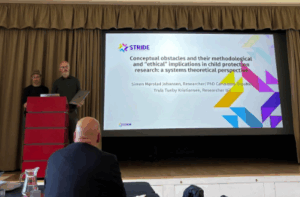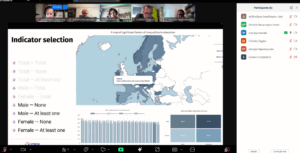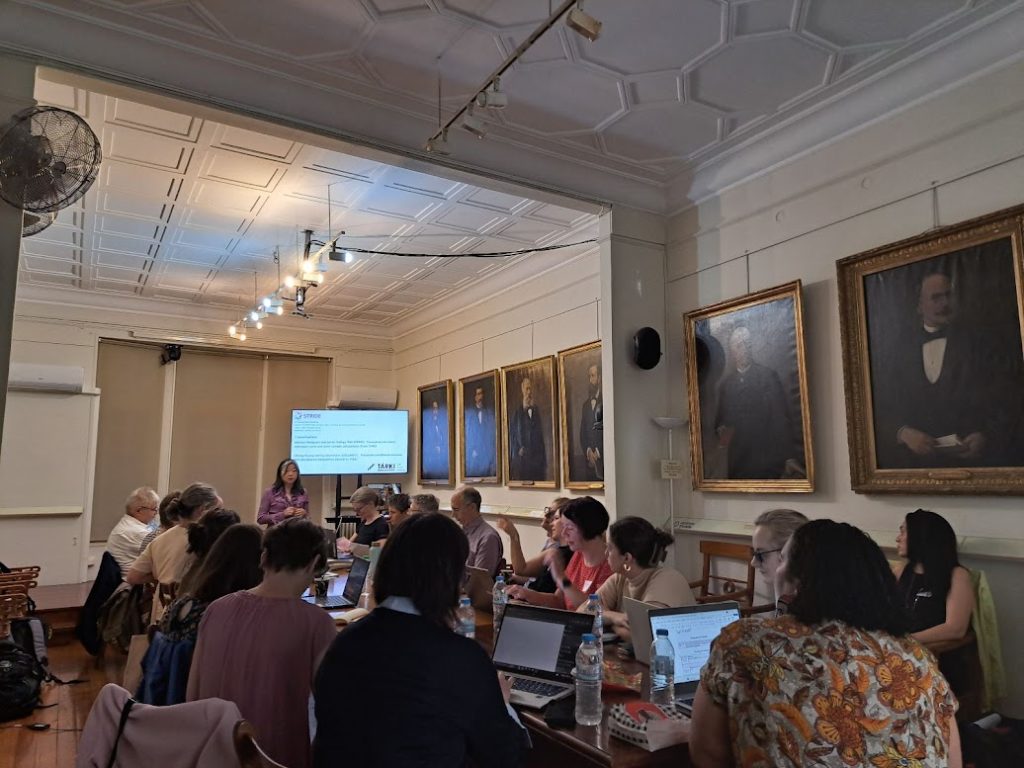STRIDE partners are investigating the impact of preschool enrolment on educational inequalities using PISA[1] data from EU countries, the UK, and Norway. While preschool enrolment rates have increased, the policy’s effectiveness in reducing educational inequalities is inconclusive. The longitudinal regression analysis conducted by the STRIDE partners found no robust evidence that higher preschool enrolment rates lead to a decrease in socio-economic inequalities in reading or mathematics scores. Therefore, it is planned to explore alternative measures and further analyse the impact of preschool on low socio-economic status (SES) students.
The session presented examples of research and analysis that mobilised PISA international benchmarks and trend data to shed light on specific policies. In this framework, Isa Steinmann and Lihong Huang from the Oslo Metropolitan University, Marton Medgyesi, TÁRKI Social Research Institute and Maria Symeonaki, Panteion University of Social and Political Sciences, presented their research on the relationship between increased preschool enrolment and educational inequalities.
About the PISA Conference
The conference, organised by the PISA Governing Board’s Analysis and Dissemination Group (ADG), the Ministry of Science, Education and Youth of Croatia, and the OECD[2] Secretariat, took place on 29-30 November 2024 in Dubrovnik, Croatia. It aimed to discuss, exchange, and learn from practices, approaches, and research on how evidence from PISA can effectively inform education policy and practice.
PISA is a survey of 15-year-old students worldwide to assess their key knowledge and skills for social and economic participation. It provides over 80 countries with comparative data on education system performance, focusing on outcomes as well as quality and equity aspects, including student well-being and school resources. Over the past two decades, a vibrant community of policy makers, researchers, and educators has emerged around PISA, using its evidence to inform national education policies. The PISA conference aims to unite this community, facilitating discussions on effectively mobilising PISA data in policy-making and school practices while representing the diverse contexts and priorities of participating countries.
Research Project Overview and Greek Preschool Policy
Maria Symeonaki, from the Panteion University of Social and Political Sciences, introduced the research project that examines the impact of preschool enrollment on educational inequality outcomes. She noted that many European countries increased their preschool enrollment rates in the past 30 years with different policies, with the goal of improving work-life balance and academic performance. In her home country Greece, for example, preschool even became mandatory for 5- and 6-year-olds in 2020. This was a response to poor PISA scores in 2018.
Cross-Enrollment Ratio and Policy Impact
Maria Symeonaki presented data from UNESCO, highlighting the gross enrollment ratios for EU countries, the UK, and Norway. It was important to note that the gross enrollment ratio could exceed 100% due to the inclusion of overage preschool children. Trends in preschool enrollment show variations among countries, with some experiencing increasing enrollment rates while others maintained consistently high ratios. Additionally, the impact of Greek policy was visible, having resulted in a notable rise in preschool enrollment.
Research Question and Methodology
Isa Steinmann from Oslo Metropolitan University outlined the research question: “Does the expansion of preschool education reduce educational inequalities?”. The study focuses on analysing data at the country level rather than examining individual children’s outcomes. Making causal inferences is challenging due to the absence of experimental data, which requires the use of observational data and longitudinal regression analysis. The research examines the average reading performance scores of students from high and low socio-economic status (SES) backgrounds across the PISA cycles.
Data Analysis and Findings
Isa Steinmann discusses the challenges of interpreting cross-sectional data, noting that higher preschool enrollment rates are initially associated with greater socio-economic inequalities. By including country-fixed effects, the analysis compares countries with themselves over time. These findings reveal that higher enrollment rates are linked to a reduction in socioeconomic inequalities in mathematics test scores. However, when controlling for other factors that changed over time, such as GDP, relative poverty rates, and the quality of the PISA samples, the observed effect weakens. Therefore, the study finds no strong evidence that increasing preschool enrollment rates leads to a decrease in educational inequalities.
Future Directions
This study is a work in progress. Currently, our study has low statistical power due to the limited number of PISA cycles[1] and participating countries[3]. The gross enrolment ratio[4] is an imperfect measure, as it is influenced by changes in the definition of which age groups preschool should cater, and because of distortions due to overage and underage children enrolled.
STRIDE partners will continue working on this research project and explore alternative data and measures of pre-school enrolment. For example, they will include PISA 2000 data, despite the lack of a socio-economic status index in the international database, to increase the number of measurement points.
Investigating the impact of increasing preschool enrolment on the enrolment of low SES children in particular, and the impact of preschool attendance on test scores at age 15 needs more detailed analysis, further research and the exploration of alternative measures and data sources.
[1] PISA is the OECD’s Programme for International Student Assessment. PISA measures 15-year-olds’ ability to use their reading, mathematics and science knowledge and skills to meet real-life challenges.
[2] The Organisation for Economic Co-operation and Development (OECD) is an international organisation that works on analysis and best practices in public policies.
[3] The nations involved in the PISA assessments, which can vary with each cycle, affecting the generalisability of the study’s findings.
[4] This statistic measures the total enrollment in a specific level of education, regardless of age, expressed as a percentage of the eligible school-age population. It can be influenced by various factors, making it an imperfect indicator of educational access.














